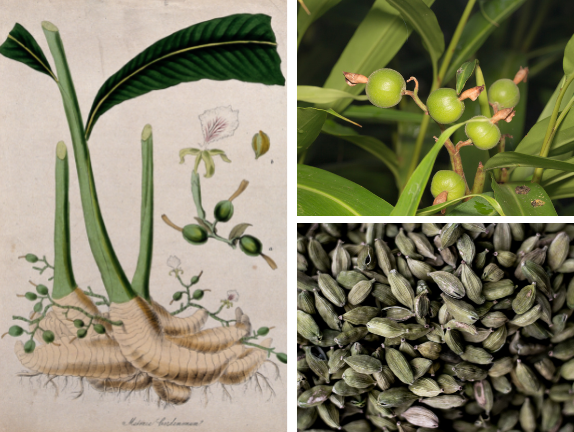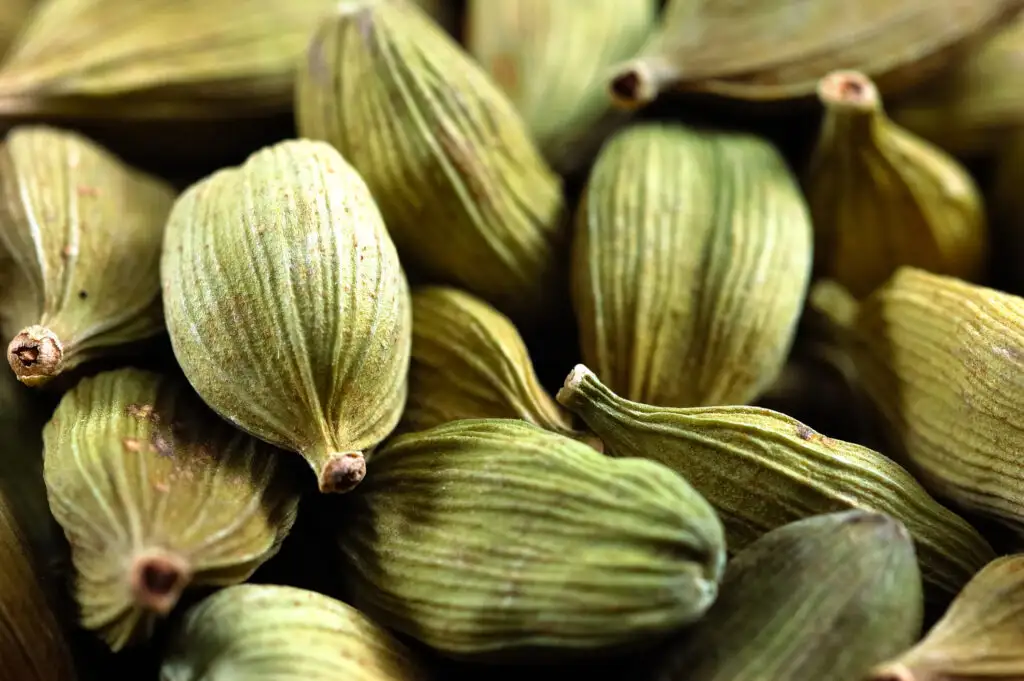Elettaria cardamomum
Latin Name: Elettaria Cardamomum
Herb Class/Action: carminative, digestive, renal tonic, aromatic (circulatory), nervine, aphrodisiac
Parts Used: seeds
Flavors: pungent, aromatic, sweet, stimulating
Energetics: mildly warming, drying, downward
Traditional Benefits: digestive system support, mood support, respiratory system support, circulatory support, supports a healthy bladder, supports a healthy mind, supports the nervous system, supports sexual health
This aromatic, blood-moving “Queen of Spices” supports digestive fire and libido with its grounding and invigorating properties. While often utilized as a digestive tonic, Cardamom’s warming and activating nature is responsible for this herb’s long history as an “aphrodisiac” herb.*
Equally packed with fragrant aromatics as it is with countless benefits, Cardamom is part of the Ginger family, and truly has such a unique flavor profile. Aromatic, almost perfume-like, spiced and slightly smoky, it gives a unique zing to your chai latte and pairs beautifully with savory dishes, rice, and dessert. Its seeds alone can even serve as a chewable breath-refresher after meals, in place of gum or mints.
(Added bonus: chewing on cardamom seeds instead of gum actually supports digestion and occasional gas and bloating!)
For centuries, Cardamom has been used to flavor food or beverages as well as in traditional preparations. This tropical spice is harvested for its seeds, which can be eaten whole or ground into a powdered form. From ancient Ayurvedic traditions to the Vikings to European countries in later centuries, people all over the world have found various kitchen and holistic uses for cardamom. As a longevity tonic, this delicious “queen of spices” can be consumed daily for continuous benefits.

In Ayurveda, Cardamom is prized for its aromatic ability to “direct” digestive energy and heat downwards. The same digestive energy we use for food and drinks is also utilized to digest our thoughts, so if you’re someone who is prone to looping thoughts that keep ‘coming back up,’ downward-directing fragrant and ‘transforming’ herbs can support not only digestive health but the healthy processing and elimination of emotions and mental patterns.
Cardamom is an ally for those who feel run down, especially in the winter, as its invigorating, activating properties are well suited to a stagnant tissue state. This herb is especially indicated for those with ‘dampness’ in the stomach or liver (think gut microbiome balance), and helps to dispel excess cold stagnation within the digestive system. Because of this, it’s commonly served at the end of a meal to help aid in digestion (while simultaneously sweetening the breath—we love a good multi-tasker).
Mentally, cardamom is grounding, clears the mind, lifts the spirits, and supports vitality. This is part of its history of use as an aphrodisiac tonic that reignites our spark and vital Qi. The same downward-directing actions that support digestion, also support our libido, by helping to invigorate our ‘fire,’ blood flow and Qi.
Adding Cardamom to your coffee may help to neutralize the over-stimulation some experience due to caffeine, making your morning fuel more conducive to nervous system health.
In Greece and Northern Europe, cardamom was made into energizing tonics—including love potions and aphrodisiacs preparations. It’s traditionally brewed into a “hospitality tea” to serve guests in one’s home, as it helps to promote connection, presence, and loosen blocks within the emotional body.
Cardamom is commonly known as the “queen of spices” for its value among spice traders, its fragrant flavor, and its many traditional uses.

